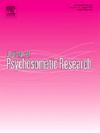儿童期/青春期和成年期虐待经历与泌尿生殖器疼痛妇女疼痛、性功能和心理健康的关系
IF 3.5
2区 医学
Q2 PSYCHIATRY
引用次数: 0
摘要
目的:14 - 25%的女性患有泌尿生殖系统疼痛,可通过既往性侵预测。本研究的目的是调查虐待类型(性、身体、情感、语言)和时间(童年、青春期、成年期)对结果(抑郁、焦虑、疼痛、性功能)的关联。方法女性(N = 350;年龄M = 48.44),在三级女性泌尿科中心报告他们是否在每个时间点经历过每种类型的虐待并完成了结果测量。结果对虐待类型和时间的分类分析确定了4类解决方案,这些解决方案主要不同于生活阶段,虐待类型(言语,情感和身体,但不包括性)升高:1)一生中很少或没有虐待(66.6%),2)童年/青少年虐待(14.6%),3)成年虐待(8.3%),或4)整个生命过程中的虐待(10.6%)。班级之间的统计比较显示,终身虐待或仅在儿童/青少年时期与终身抑郁和虐待有关,并伴有焦虑(p <;.001, d = 0.48-1.40),而没有滥用。然而,终身虐待或仅在成年期,而非仅在童年/青少年期,与疼痛干扰、疼痛强度和低性满意度有关(p <;0.05, d = 0.38-0.77)。结论这些模式提示虐待发生的时间在心理和生理健康方面可能存在差异;儿童期和成年期的虐待(尤其是情感/语言和身体上的虐待)可能容易导致精神健康状况不佳,而成年期的虐待可能更多地与疼痛和功能有关。人们应该评估虐待发生的时间——包括成年期——以及虐待的类型,以了解其与结果的关系。本文章由计算机程序翻译,如有差异,请以英文原文为准。
Associations of abuse experiences in childhood/adolescence and adulthood to pain, sexual functioning, and mental health among women with urogenital pain
Objective
Urogenital pain affects 14–25 % of women and is predicted by prior abuse. The purpose of this study was to investigate associations of abuse type (sexual, physical, emotional, verbal) and timing (childhood, adolescence, adulthood) on outcomes (depression, anxiety, pain, sexual functioning).
Methods
Women (N = 350; age M = 48.44) presenting with pain at a tertiary women's urology center reported whether they had experienced each type of abuse at each time point and completed outcome measures.
Results
Latent class analysis of abuse types and timings identified a 4-class solution which differed primarily in phase of life for which abuse types (verbal, emotional, and physical, but not sexual) were elevated: 1) little or no abuse throughout life (66.6 %), 2) childhood/adolescent abuse only (14.6 %), 3) adulthood abuse only (8.3 %), or 4) abuse across the life course (10.6 %). Statistical comparisons between classes revealed abuse throughout life or in childhood/adolescence only was associated with depression and abuse throughout life, with anxiety (p < .001, d = 0.48–1.40), compared to no abuse. However, abuse over life or in adulthood only, but not childhood/adolescent only, was associated with pain interference, pain intensity, and low sexual satisfaction (p < .05, d = 0.38–0.77).
Conclusion
These patterns suggest that when abuse occurs may matter differentially in terms of mental and physical health; abuse (especially emotional/verbal and physical) in both childhood and adulthood may predispose to poor mental health, whereas adulthood abuse may be more associated with pain and functioning. One should assess when abuse occurs—including adulthood—in addition to type of abuse to understand its association with outcomes.
求助全文
通过发布文献求助,成功后即可免费获取论文全文。
去求助
来源期刊
CiteScore
7.40
自引率
6.40%
发文量
314
审稿时长
6.2 weeks
期刊介绍:
The Journal of Psychosomatic Research is a multidisciplinary research journal covering all aspects of the relationships between psychology and medicine. The scope is broad and ranges from basic human biological and psychological research to evaluations of treatment and services. Papers will normally be concerned with illness or patients rather than studies of healthy populations. Studies concerning special populations, such as the elderly and children and adolescents, are welcome. In addition to peer-reviewed original papers, the journal publishes editorials, reviews, and other papers related to the journal''s aims.

 求助内容:
求助内容: 应助结果提醒方式:
应助结果提醒方式:


